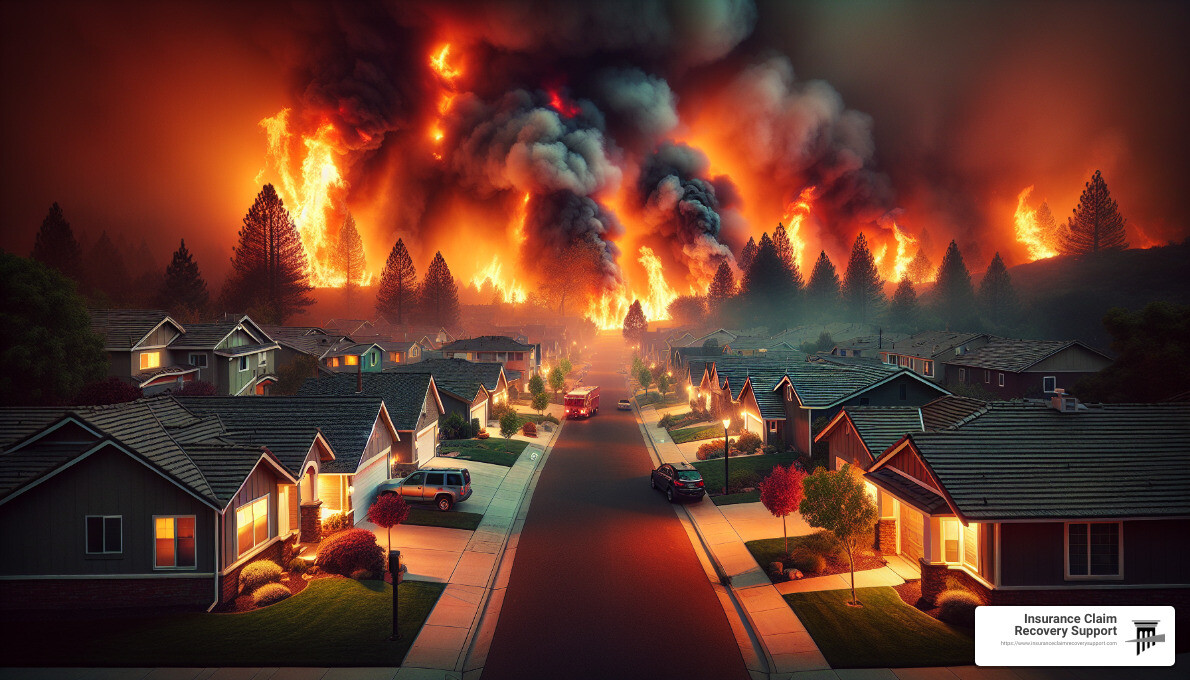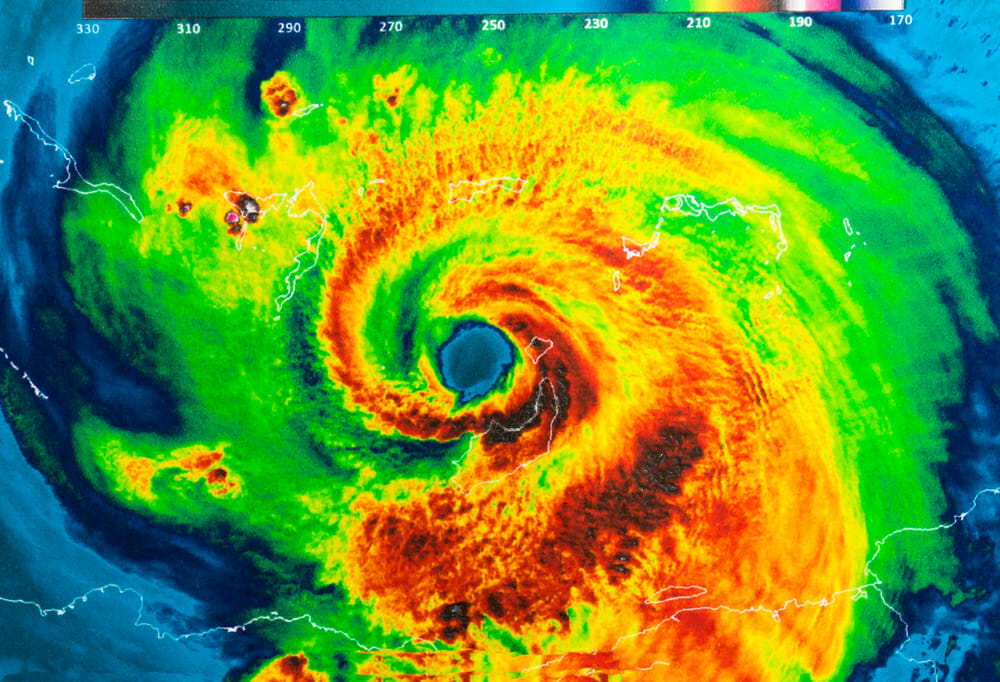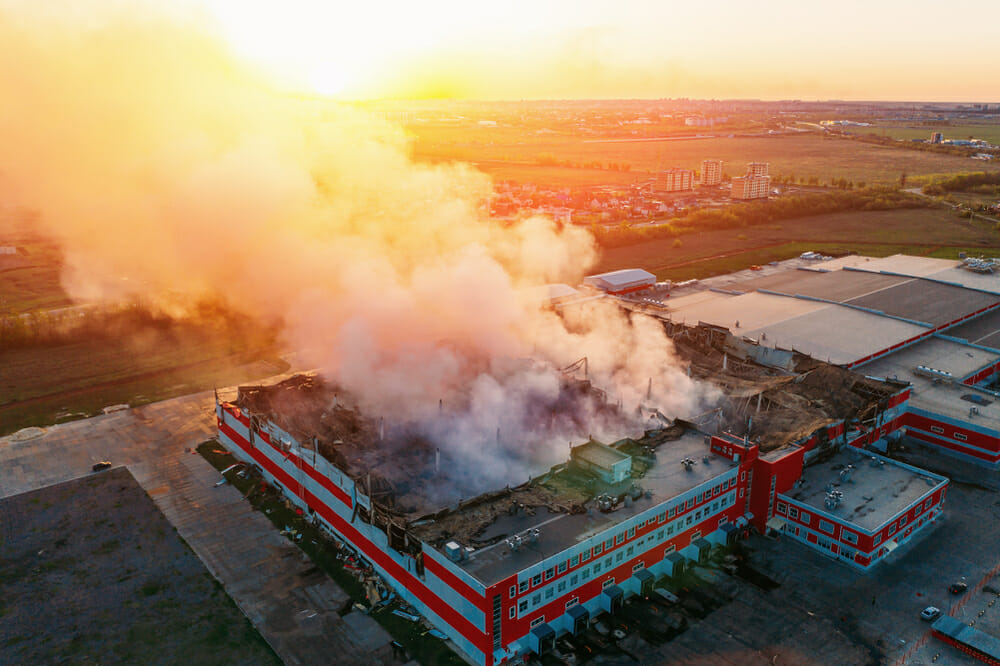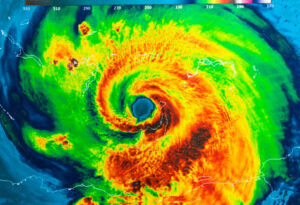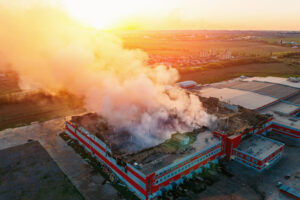Quick Answer for ‘Asbestos from Fire’ Concerns:
– Asbestos: Common in buildings pre-1990.
– Fire Risk: Can release harmful asbestos fibers.
– Protection: Professional cleanup recommended.
– Texas Impact: High due to many older buildings.
Fires are terrifying, and their aftermath can be just as hazardous, especially when asbestos is involved. If you’re a property owner in Texas, you might be particularly concerned about this. Many buildings, especially those constructed before 1990, contain materials laced with asbestos. When these materials are exposed to fire, they can release tiny, harmful fibers into the air. This isn’t just a minor inconvenience—it’s a significant health hazard.
Asbestos was once hailed as a marvel of construction due to its fire-resistant properties. However, we now know that when asbestos fibers are inhaled, they can lead to serious illnesses, including cancer. This makes the cleanup after a fire incredibly important but also risky.
For Texans, the stakes are high. Cities like Austin, Dallas, Fort Worth, Houston, and others are packed with buildings that were built during the asbestos heyday. This makes fire damage in these areas not just a matter of structural repair, but also a pressing health concern.

Understanding the risks and steps to safely manage asbestos after a fire is essential to protecting not just your property, but also your health and that of your community. This introduction will pave the way for a deeper dive into the complexities of dealing with asbestos post-fire, the specific challenges faced in Texas, and how navigating the insurance claim process is crucial for property owners.
Understanding Asbestos and Fire
When a fire occurs, it’s not just the flames that pose a risk to your health and property, but also the materials that become damaged in the process. Asbestos, a material once heralded for its fire-resistant properties, becomes a significant concern when it’s involved in fire incidents. Let’s break down what you need to know about asbestos and its relationship with fire.
Asbestos Properties
Asbestos is a group of naturally occurring fibrous minerals known for their durable and fire-resistant qualities. These properties made asbestos a popular material in construction and manufacturing for decades. Unfortunately, when asbestos is disturbed, it releases tiny fibers into the air, which can be harmful when inhaled.
Fire Resistance
The fire-resistance of asbestos made it a go-to material for insulation, roofing, and even firefighter gear. However, this same resistance to heat can turn against us when asbestos-containing materials are damaged by fire. The material might not burn, but it can release harmful fibers into the air.
Historical Use
Historically, asbestos was used extensively across various industries, from construction to automotive, due to its versatility and resistance to heat and chemicals. Buildings constructed or renovated before the 1990s are likely to contain asbestos in some form—be it in insulation, floor tiles, or ceiling materials.
Asbestos in Homes
Many homes built before the 1990s may contain asbestos within their structure. Common asbestos-containing materials (ACMs) in residential properties include but are not limited to insulation, textured paint, roofing felt, and floor tiles. While these materials are generally considered safe when left undisturbed, they pose a risk when damaged by fire, renovations, or wear and tear over time.
Navigating the Risks
Understanding the relationship between asbestos and fire is crucial for homeowners, especially those living in older properties. Awareness of the potential risks and knowing how to identify asbestos materials in your home can help mitigate health hazards.
If your home suffers fire damage, consider the possibility of asbestos exposure. Even if the asbestos doesn’t ignite, the high temperatures and structural damage can release asbestos fibers into the air, posing a risk to anyone without proper protective gear.
To ensure safety, it’s recommended to consult with professionals for asbestos inspection and removal. Handling asbestos-containing materials without the proper knowledge or equipment can exacerbate the risk of exposure.
In conclusion, while asbestos offers fire resistance, its presence in fire-damaged buildings presents a significant health risk. Recognizing the properties and historical use of asbestos, especially in homes, is the first step towards protecting yourself and your loved ones from potential asbestos exposure following a fire. For more detailed insights on handling asbestos safely, consider visiting Asbestos.com, an authoritative source on the matter.
We’ll explore the health risks associated with asbestos exposure from fire, emphasizing the importance of professional intervention and the role of insurance in mitigating these risks.
Health Risks of Asbestos Exposure from Fire
When a fire ravages a building, the immediate danger is often thought to be the flames or smoke. However, an invisible hazard, asbestos from fire, can pose serious long-term health risks to those exposed. Let’s delve into the primary health concerns tied to asbestos exposure post-fire: Mesothelioma, Lung Cancer, Asbestosis, and the overall symptoms and long-term effects you should be aware of.
Mesothelioma
This rare but aggressive cancer affects the lining of the lungs, chest, abdomen, and heart and is directly linked to asbestos exposure. Mesothelioma can take 20 to 50 years to develop after inhaling asbestos fibers. Unfortunately, by the time it’s diagnosed, it often has reached an advanced stage.
Lung Cancer
Asbestos exposure can also lead to lung cancer, which can manifest after a latency period similar to mesothelioma. Those who have been exposed to asbestos and also smoke have a significantly higher risk of developing lung cancer.
Asbestosis
This chronic lung condition is caused by inhaling asbestos fibers that irritate lung tissues and lead to scarring. Symptoms include shortness of breath and a dry cough, with the condition often worsening over time and leading to severe respiratory issues.
Symptoms of Exposure
The tricky part about asbestos exposure is that its symptoms can take decades to appear. Early signs mirror less severe respiratory issues, like coughing and shortness of breath, making it easy to overlook the potential connection to asbestos.
Long-term Health Effects
Aside from the diseases mentioned, asbestos exposure can lead to other long-term health issues. Pleural thickening, another condition, restricts lung expansion, causing breathlessness. The cumulative effect of asbestos exposure can significantly deteriorate one’s quality of life over time.
Precautions and Awareness
Given the serious health risks associated with asbestos from fire, it’s crucial for anyone involved in or near a fire-damaged building to be aware of these hazards. Professional asbestos removal is strongly advised to minimize the risk of exposure. For individuals who may have been exposed, regular health check-ups are essential for early detection of related diseases.
Understanding the potential health risks associated with asbestos exposure from fire underscores the importance of professional intervention during cleanup and the role of insurance in mitigating these risks. As we move into the next section, we’ll discuss identifying and mitigating asbestos risks in fire-damaged buildings, emphasizing the critical role of professional asbestos abatement and the necessary precautions if DIY measures are taken.
While immediate dangers like flames and smoke are visible and alarming, the invisible threat of asbestos can pose equally serious health risks. Awareness and professional guidance are key to navigating these hazards safely.
Identifying and Mitigating Asbestos Risks in Fire-Damaged Buildings
After a fire, the aftermath can be overwhelming. Among the ruins, hidden dangers like asbestos from fire-damaged materials can pose significant health risks. Here’s what you need to know to identify and mitigate these risks effectively.
Asbestos-Containing Materials
First, understand that homes built before 1990 are more likely to contain asbestos. Materials such as insulation, roofing felt, and floor tiles might have asbestos. If your home fits this age bracket, it’s wise to be cautious.
Professional Asbestos Abatement
The safest route to deal with asbestos is professional asbestos abatement. These experts know how to handle and remove asbestos safely, minimizing exposure. Given the health risks associated with asbestos fibers, relying on professionals is strongly advised.
DIY Precautions
If you must handle materials before professional help arrives, take precautions. Wet the debris to reduce dust, use proper respiratory protection, and seal off the area with plastic sheeting. However, DIY is not recommended for asbestos.
Protective Gear
Whether you’re a professional or a homeowner taking immediate action, protective gear is a must. Use a NIOSH-approved N-100 or P-100 respirator, gloves, and disposable coveralls. Safety first, always.
Legal Requirements in Texas
In Texas, regulations are in place to protect the public from asbestos hazards. Buildings suspected of containing asbestos must be inspected before any demolition or renovation. If asbestos is found, removal must follow specific safety protocols. Understanding and complying with these regulations is crucial for homeowners and professionals alike.
Next Steps
Awareness of the potential presence of asbestos in fire-damaged buildings is the first step. By following proper procedures and laws, you can mitigate the risks of asbestos exposure. Always prioritize safety and seek professional guidance to navigate the complexities of asbestos abatement.
It’s essential to understand how asbestos exposure from fire affects insurance claims and the support available to navigate these challenges.
Asbestos and Insurance: Navigating Claims for Fire Damage
Dealing with fire damage is tough. When asbestos from fire is involved, it gets tougher. Here’s how you can navigate insurance claims for fire damage, especially when asbestos is a concern.
Insurance Claim Recovery Support LLC is here to help. We specialize in guiding policyholders through the complexities of insurance claims. Our expertise includes dealing with asbestos-related claims, which can be tricky and detailed.
Claim Process
When filing a claim involving asbestos from fire, the process involves several key steps:
– Report the Damage: Do this as soon as possible. Delay can complicate claims.
– Document Everything: Take photos, keep receipts, and make a list of damaged items.
– Asbestos Testing: If your building is older, getting it tested for asbestos is crucial.
– Professional Cleanup: Opt for professional asbestos abatement services and keep records of all work done.
Maximizing Settlements
To ensure you get the compensation you deserve, follow these tips:
– Understand Your Policy: Know what your insurance covers. Asbestos abatement can be costly, and you’ll want to ensure these costs are covered.
– Get Professional Help: Consider hiring Insurance Claim Recovery Support to manage your claim. Experts can help navigate the intricacies of asbestos-related claims and maximize your settlement.
Texas-specific Considerations
In Texas, fire and asbestos regulations can affect how claims are handled. Be aware of state laws and regulations regarding asbestos abatement and disposal. Texas often requires specific documentation and professional certification for asbestos-related work.
Fire and Storm Damage News
Keep an eye on the latest news regarding fire and storm damage in Texas. Changes in regulations or public health announcements can impact how asbestos claims are processed and what is required for cleanup and abatement.
Navigating insurance claims for fire damage involving asbestos is complex. With the right knowledge and support from professionals like Insurance Claim Recovery Support LLC, you can manage your claim effectively, ensuring safety and maximizing your settlement. Dealing with asbestos requires careful attention to health and legal guidelines. Always prioritize safety and seek expert guidance.
As we transition to frequently asked questions about asbestos from fire, each situation is unique. Stay informed, prepared, and seek professional assistance when needed.
Frequently Asked Questions about Asbestos from Fire
When it comes to fires, whether they’re wildfires or structural fires, concerns about asbestos exposure often arise. Here, we’ll tackle some of the most common questions regarding asbestos from fire to provide clarity and guidance.
Is there asbestos in wildfire smoke?
Wildfire smoke can carry a mix of particles and gases, including materials from burnt structures. If a fire burns through areas with older buildings containing asbestos, there’s a chance that asbestos fibers can become airborne and mix with the smoke. However, the concentration and risk level can vary significantly depending on the specific materials involved and the fire’s intensity. It’s always safer to assume there might be asbestos in wildfire smoke, especially near urban areas where older structures are present.
Are all fire doors asbestos?
Not all fire doors contain asbestos. The use of asbestos in fire doors was more common in the past due to its fire-resistant properties. However, since the health risks associated with asbestos became widely known, many manufacturers have switched to alternative fire-resistant materials. If a fire door was installed or manufactured before the 1990s, there’s a higher chance it could contain asbestos. For newer installations, it’s less likely, but always check with the manufacturer or a professional if you’re unsure.
Do fire blankets contain asbestos?
Historically, asbestos was used in some fire blankets because of its excellent heat resistance. However, due to the health risks posed by asbestos fibers, modern fire blankets are made from materials such as fiberglass or silica that do not contain asbestos. If you have an older fire blanket, particularly one that predates the 1990s, there’s a possibility it contains asbestos. It’s advisable to replace old fire blankets with new, asbestos-free versions to eliminate any risk of exposure.
When dealing with asbestos from fire or suspecting the presence of asbestos in any fire-related materials, it’s crucial to take precautions. Always wear appropriate protective gear, such as an N-100 or P-100 respirator, and consider consulting professionals for testing and safe removal. Understanding the risks and taking appropriate measures can significantly reduce the hazards associated with asbestos exposure during and after a fire.
As we continue to explore the complexities of dealing with asbestos, especially following fire damage, ensuring your safety and the safety of those around you should always be the priority. For more detailed information and guidance, reaching out to professionals, such as Insurance Claim Recovery Support, can provide the expertise needed to navigate these challenges effectively.
Conclusion
When facing the aftermath of a fire, understanding the risks associated with asbestos is crucial for ensuring the safety and well-being of everyone involved. The dangers of asbestos from fire cannot be understated, as its fibers pose serious health risks when disturbed and released into the air. It’s essential to approach the situation with a high degree of awareness and caution.
Awareness is the first step towards minimizing the risks of asbestos exposure following a fire. Knowing that older buildings and certain materials are more likely to contain asbestos can help in identifying potential hazards early on. Awareness also means understanding the health implications of asbestos exposure and recognizing the importance of acting swiftly to mitigate these risks.
Professional help is indispensable in dealing with asbestos safely and effectively. Specialized knowledge and equipment are required to assess, contain, and remove asbestos-containing materials without further endangering health. This is where the expertise of asbestos abatement professionals becomes invaluable. Attempting to handle asbestos cleanup without the proper training and tools can exacerbate the situation, increasing the likelihood of exposure and the associated health risks.
At Insurance Claim Recovery Support LLC, we understand the complexities and dangers involved in dealing with asbestos from fire. Our team is committed to assisting you through every step of the recovery process, from identifying potential asbestos risks to navigating the insurance claims process. We are dedicated to ensuring that you receive the support and compensation you deserve, allowing you to focus on recovery and rebuilding.
In conclusion, facing a fire-damaged property can be overwhelming, especially when dealing with the added complication of asbestos. However, with the right awareness and by seeking professional help, these challenges can be managed effectively. You’re not alone in this. Insurance Claim Recovery Support LLC is here to help guide you through this difficult time, ensuring your safety and helping you recover what you are entitled to from your insurance claim. Stay informed, stay safe, and don’t hesitate to reach out for professional assistance.


